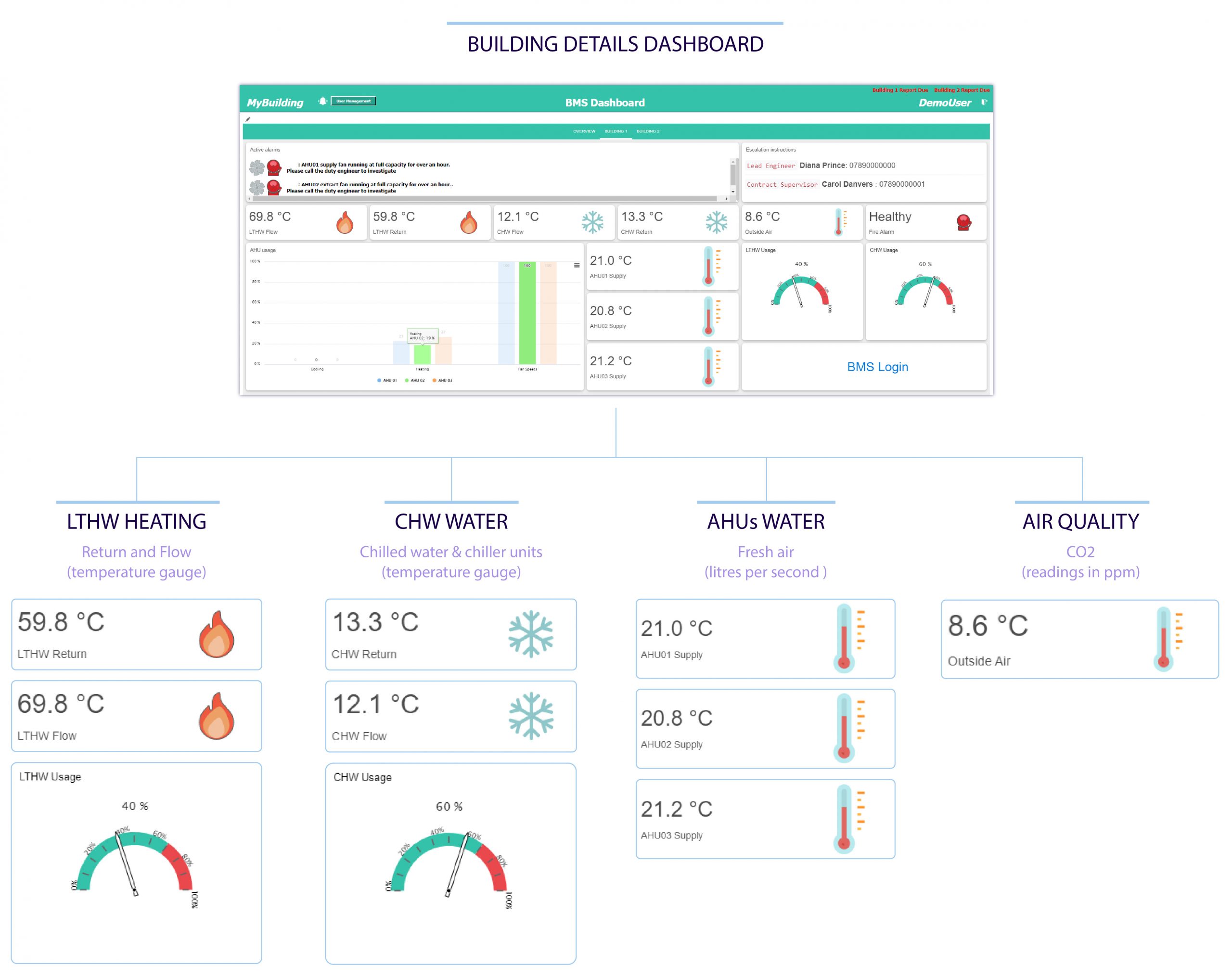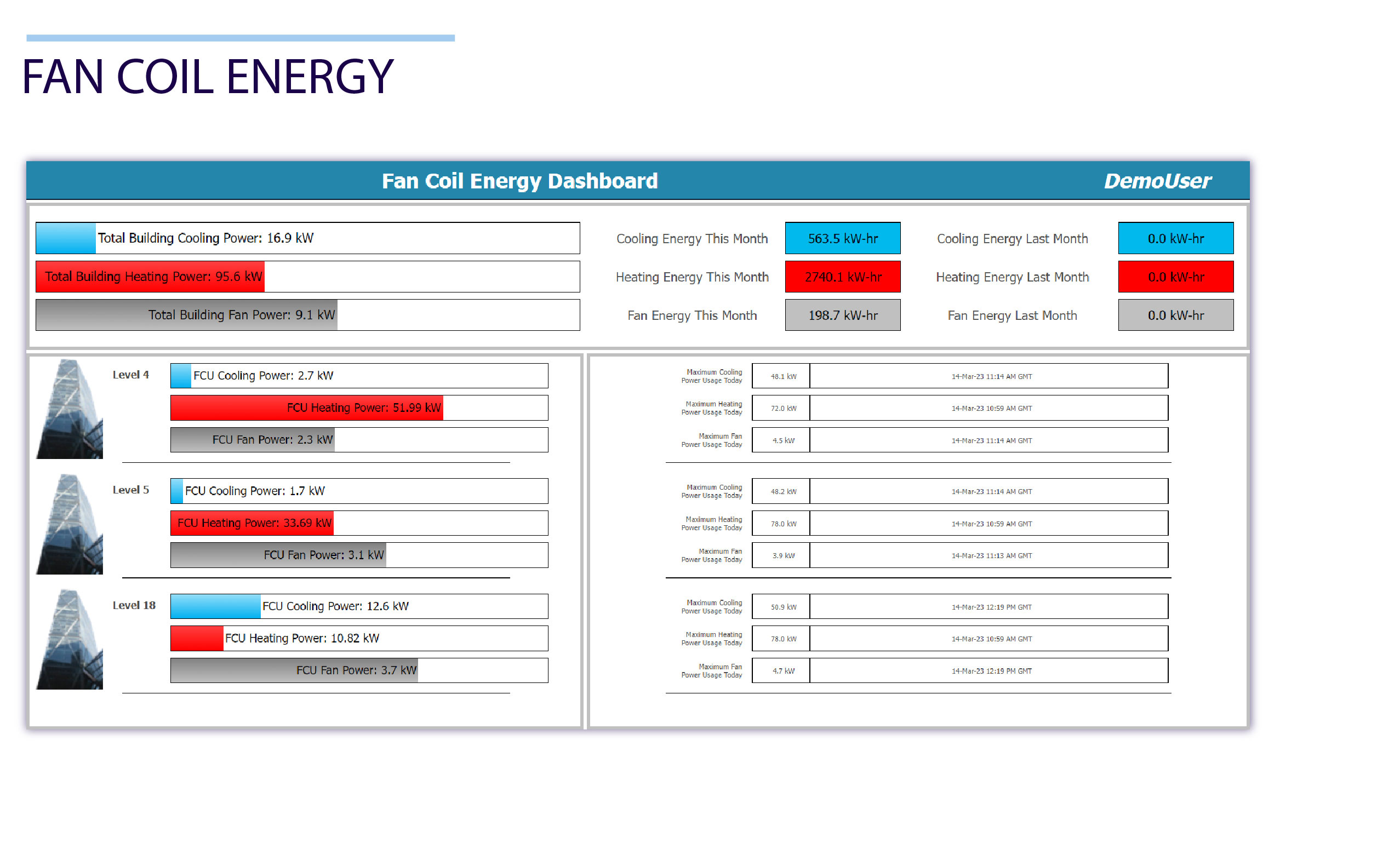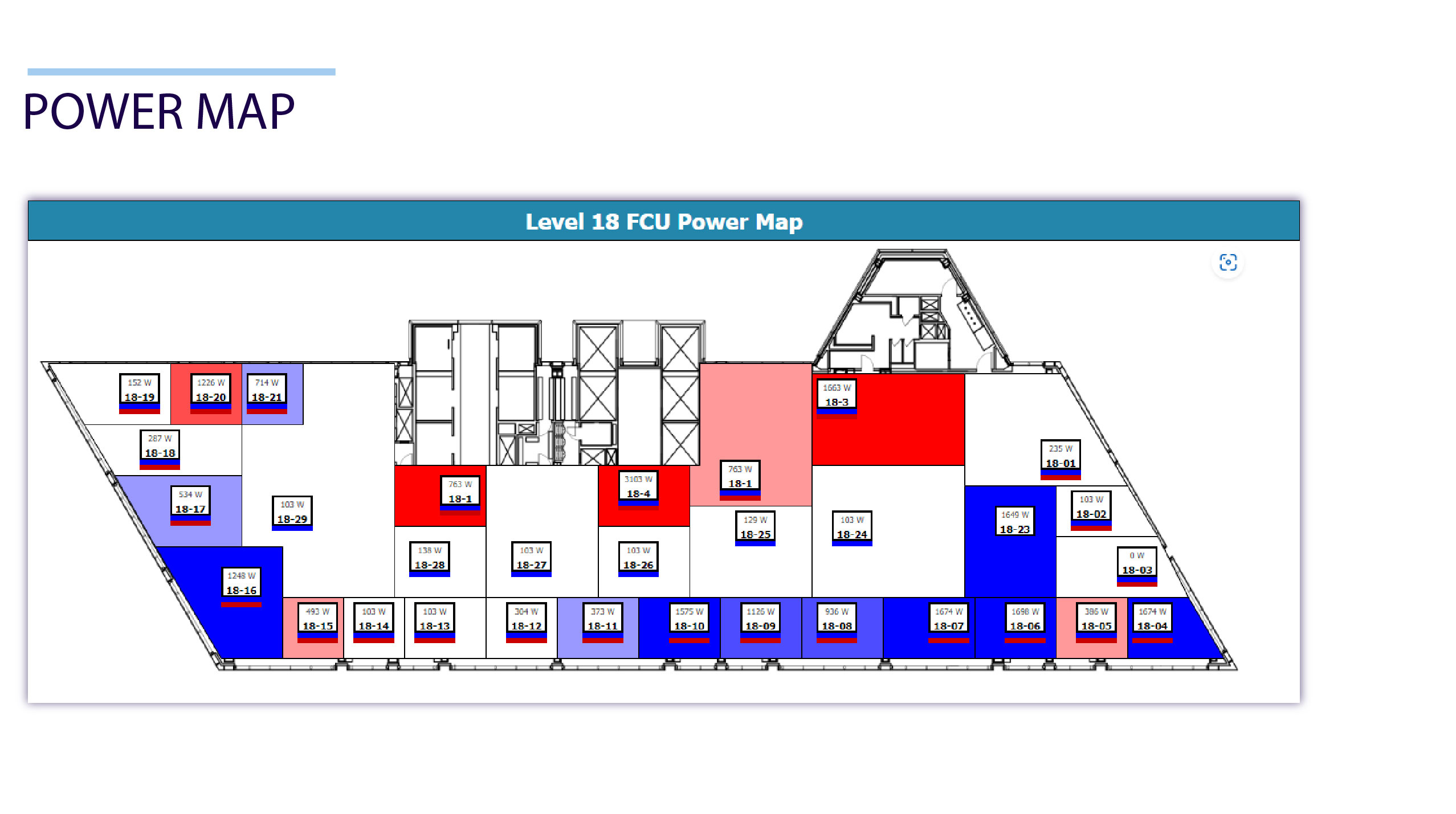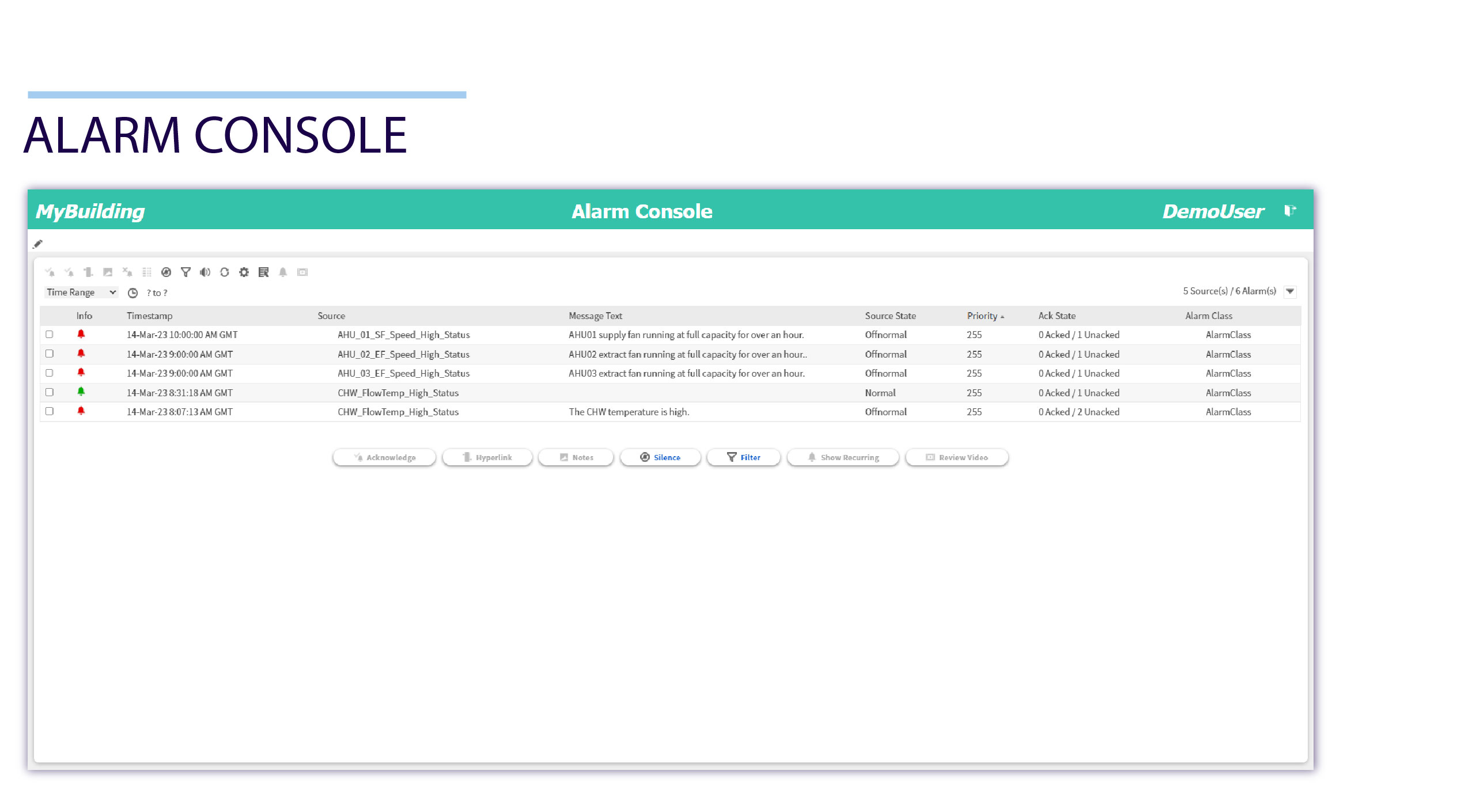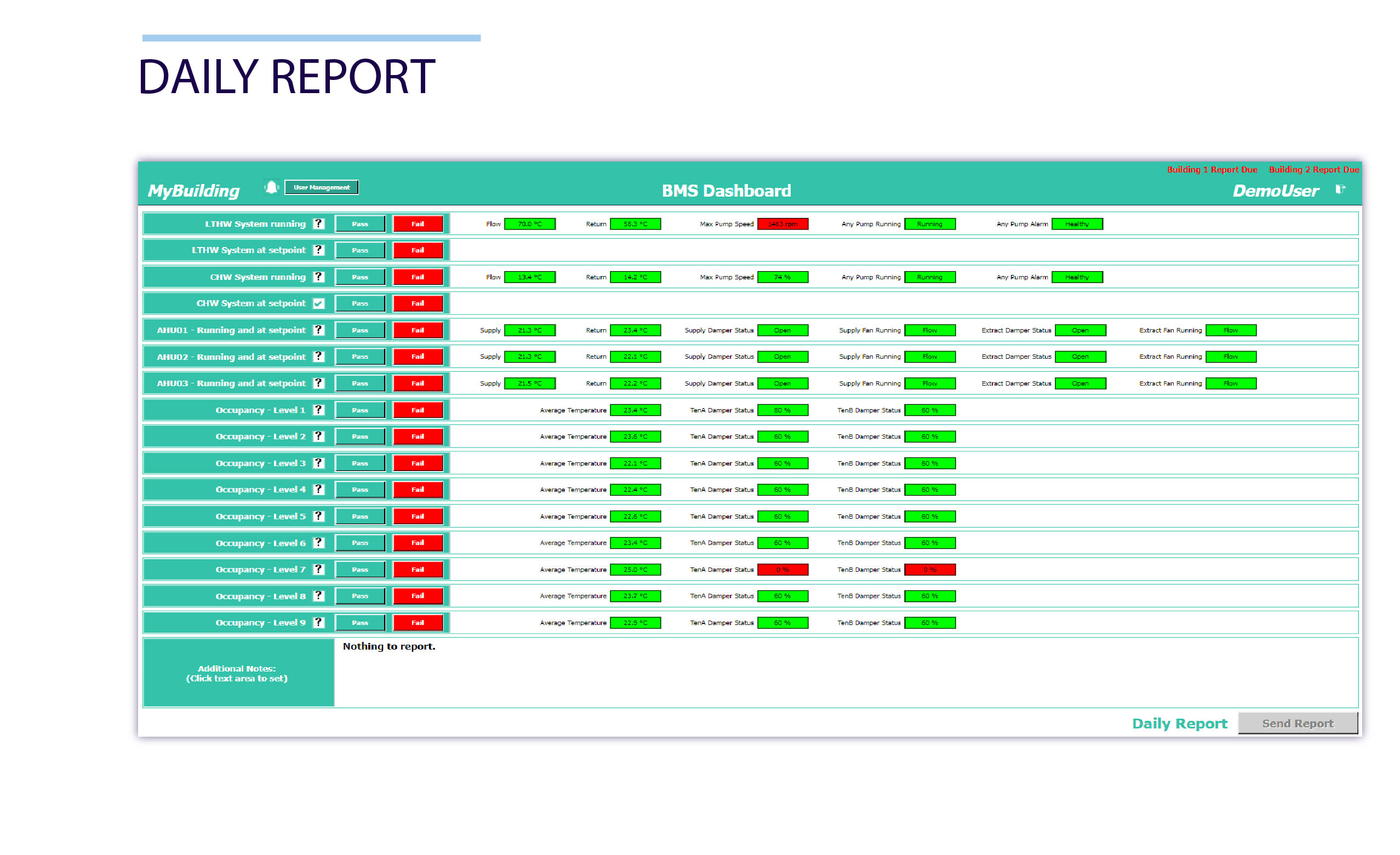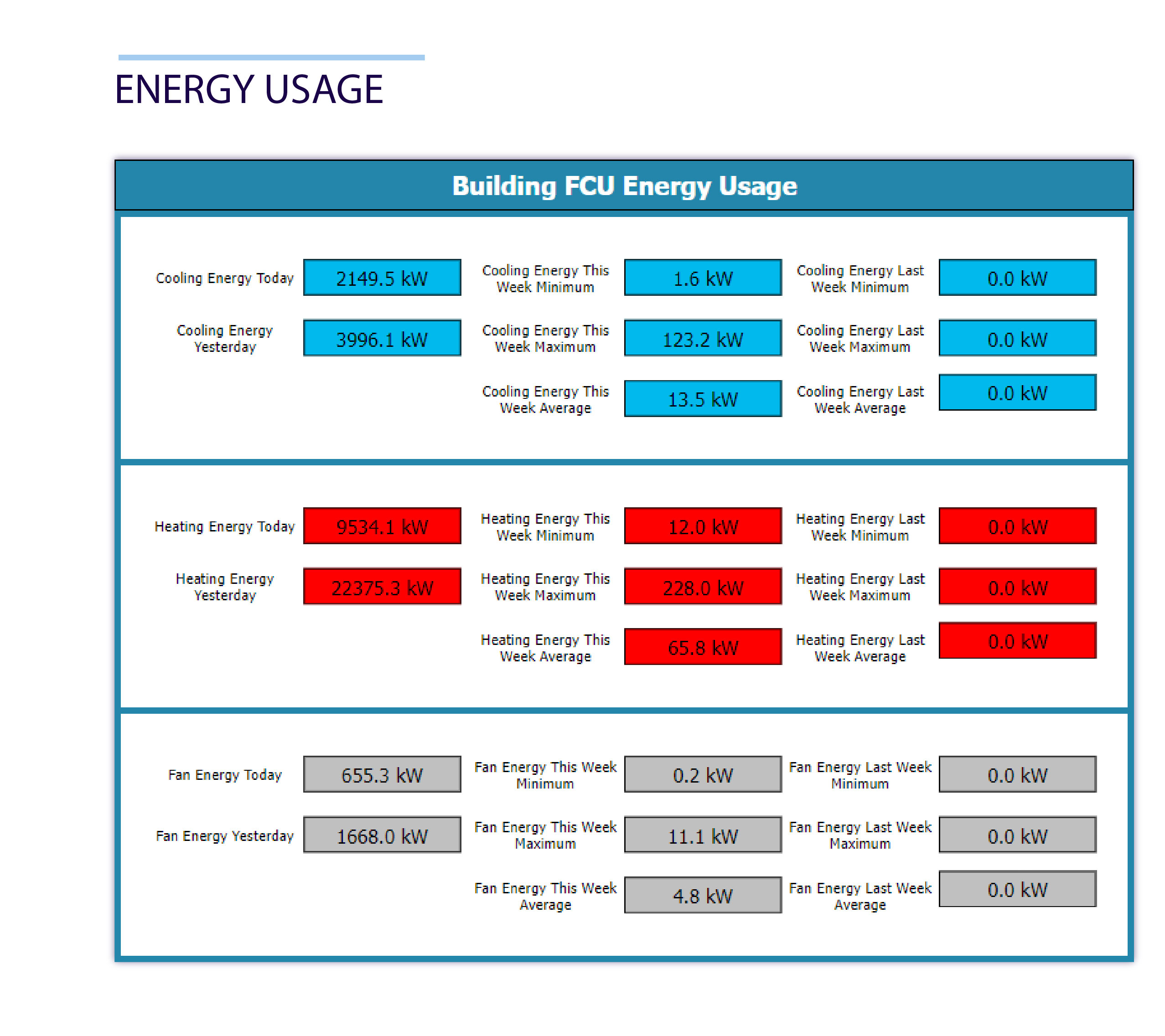The Critical Systems
Monitoring
Dashboard provides
a single overview
and continuous live
monitoring of each
of the systems
within a building.

| Links into any BMS and can be customised to meet the specific requirements of the building and its building tech/engineering management team. | |
| No limit to the number of users of the dashboard, and each can be given unique permissions for the view that they require. |
| Used by onsite engineers and remotely by duty engineers 24/7. | |
| Notes can be added to record activity on each system i.e. maintenance dates and details of faults recorded. | |
| Convenient access to up-to-date details of who to call if a fault is noted. |
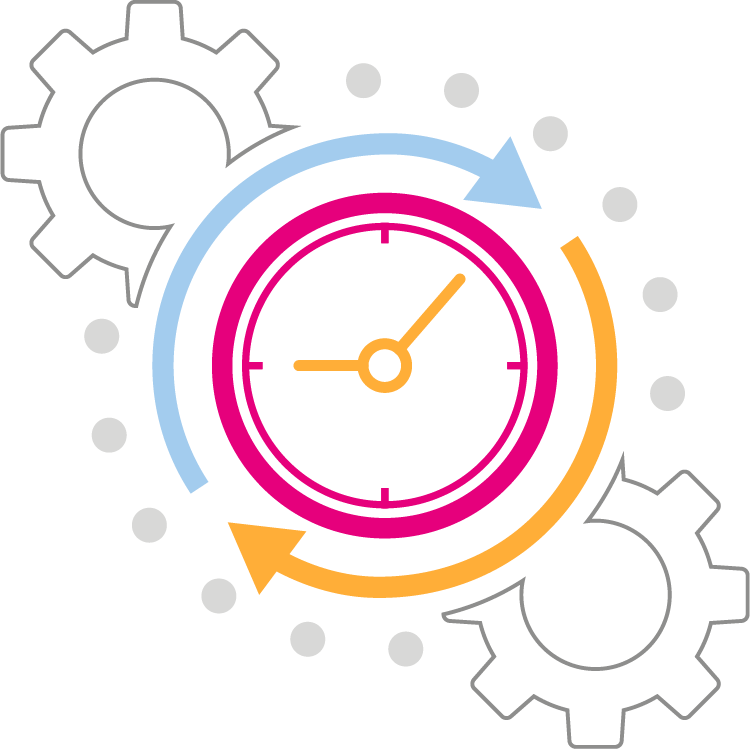
Saves engineers’ time,
reduces response times to
rectify faults, provides
consistency
This centralised view of the systems replaces the need to rely on time-consuming manual checks and tests by onsite engineers as it’s constantly monitoring each of the systems and provides real time fault identification. An alert can be set for when a system isn’t functioning within a target range. This means the response time to rectify a fault can be quicker as engineers can instantly react to the information provided rather than waiting for scheduled manual test to be carried out before the fault is identified. It also removes the risk of human error and provides consistency in measurements.
Ensures business
continuity
Continual monitoring means issues are identified as soon as they arise so they can be addressed before they become urgent. By setting individual targets for each system, when that system is functioning at less than its full operational capacity an alert provides actionable information to facilitate a proactive response before it suffers an outage.
This enables preventative maintenance to be prioritised and reduces the need for out of hours call outs. Alarms can be set for business critical services in specific locations within a
Increased efficiencies
and cost savings
Continual monitoring of performance against targets identifies inefficiencies so they can be addressed which will facilitates energy efficiencies which and monitors performance ongoing to ensure they keep to
the targets as well as providing reports. The dashboard provides analytic tools for comparative analysis and performance analysis for each of the systems which are useful to identify adjustments to increase efficiency.

